Subaru Forester Vs Nissan Rogue: Which Compact Crossover is Right for You?

The Subaru Forester and Nissan Rogue are two very different takes on the modern family crossover.
Subaru has built a reputation for tough, go-anywhere vehicles on the basis of its symmetrical all-wheel drive system. The Forester sticks to the brand’s traditions, wrapping them all up in an easy-to-manage shape.
Meanwhile, Nissan has kept the Rogue a much more road-focused package, with the recent 2021 redo piling in more family-friendly features and clever tech.
Get a Quote on a New Nissan Rogue or Subaru ForesterBoth of these compact crossovers bring a lot to the table in a fiercely competitive segment. Which one suits your particular needs best, dear reader? Let’s find out.
Cabin Space
Forester: The Forester’s interior is like a good pair of hiking boots: not fancy to look at, but does everything you need, when you need it. Even the top trims can’t match the semi-premium looks of the Rogue, though. That said, leather seating is available if you want to zhoosh up the place.
When it comes to pure space, the Forester sits right near the top of the class. The tall glasshouse affords front-row passengers with up to 41.2 inches (1,047 mm) of headroom, and back-seat riders aren’t far behind with 39.6 inches (1,007 mm). Pick up the large sunroof and the second-row suffers more, shrinking to 37.7 inches (957 mm). Front headroom is then 40.2 inches (1,020 mm).
The Forester also holds the edge in legroom, measuring 43.3 and 39.4 inches (1,101 and 1,000 mm) front and back. Front-seat hip room is identical in both vehicles (54.1 inches/ 1,374 mm), while the Forester has a slight advantage in the back (53.6 inches/ 1,361 mm).
Rogue: Nissan made a concerted effort to improve the interior ambiance for the newer Rogue. This is especially apparent in the top Platinum trim, with acres of soft-touch plastic, and quilted leather on those Zero Gravity seats. The Rogue also includes a handy storage space just underneath the center console.
Breaking out the tape measure, the Nissan is bigger in every exterior dimension bar height, typically by around an inch (25 mm) or so. That should translate to more interior space, right? Not exactly. The Rogue trails the Forester slightly in headroom, at 41.1 and 39.2 inches (1,044 and 996 mm) front-to-back without a sunroof, and 39.2 and 37.8 inches (995/960 mm) with. Front-row legroom is practically identical in both (43.3 inches / 1100 mm), with the Rogue giving up just under an inch for rear passengers (38.5 inches / 978 mm). Similarly, hip room is the same up front in both Subaru and Nissan (54.1 inches / 1,374 mm); rear Rogue hip room is 53.4 inches (1,356 mm).
SEE ALSO: Subaru Outback vs Subaru Forester ComparisonBottom Line: The numbers don’t lie: the Forester out-stretches the newcomer in most measures. The Nissan has the plusher interior in the respective top trims, however.
Cargo Space and Towing
Forester: The Forester’s priority is space for people, not things. Trunk space is 28.9 cubic feet (818 L) when the second row is in use; this expands to 69.2 cubic feet (1,960 L) when it’s folded flat.
Owners can tow up to 1,500 lb with the Forester when properly equipped.
Rogue: With all seats in their upright positions, the Rogue will gobble up 36.5 cubic feet (1,034 L) of stuff. Drop the second row and you’ll find 74.1 cubes (2,098 L). That puts the Rogue right near the top of the class, with only the Honda CR-V able to best it in both measures.
Nissan quotes a towing capacity of 1,350 lb for the Rogue.
Bottom Line: The Nissan fights back with a more cavernous cargo hold. Its tailgate opening is also more load-friendly.
Technology and Features
Forester: Lower trims make do with a 6.5-inch touchscreen, with Sport and up adopting a larger 8.0-inch unit. An additional screen sits up top right underneath the windshield base. This provides added information on things like range, but the wheel-mounted controls can be counter-intuitive to use.
Rogue: The Rogue’s base infotainment screen matches the Forester’s larger 8.0-inch item. The SL Premium and Platinum both bump it up an additional inch, but all trims feature a clean, quick menu design. The Platinum goes all in on providing lots of digital real estate: its instrument panel is fully digital (and thus, customizable), and it also features a color head-up display.
SEE ALSO: 2020 Ford Escape Hybrid Review: Friendly Fuel-SipperBottom Line: The Subaru’s stacked center display provides the driver with plenty of info—almost too much at times. The Nissan’s newer, quicker infotainment system will likely be easier for most drivers (and their passengers) to learn. We’re also always fans of head-up displays here at AutoGuide, which helps the Rogue in this match-up.
Powertrains
Forester: Subaru has long marched to the beat of its own drum. That still applies today, with the brand sticking to the flat-four “boxer” design of its engine. The 2.5-liter engine sits low in the nose to keep the center of gravity closer to terra firma. The Forester holds the horsepower advantage here, with its 182-strong corral pipping the Rogue by a single horse. Its 176 lb-ft of maximum torque is less than the Rogue’s peak figure, and it arrives later in the rev range.
A continuously variable transmission (CVT) sends power to all four corners courtesy of Subaru’s symmetrical all-wheel drive system.
Rogue: When the current Rogue debuted for the 2021 model year, it came with a familiar package: a 2.5-liter, naturally-aspirated four-cylinder hooked up to a CVT. The engine sends its 181 hp and 181 lb-ft of torque to the front wheels as standard, with AWD optional.
In March 2021, Nissan announced a “pilot program” to include a more efficient 1.5-liter turbocharged three-cylinder in the lineup. It should offer similar performance to the existing engine, yet sip less fuel.
SEE ALSO: 2020 Ford Escape Hybrid vs 2020 Toyota RAV4 HybridBottom Line: Both of these cute-utes stick to the same script: two-and-a-half liters of displacement, around 180 horsepower, and a CVT transmission. Subaru just happens to arrange its quartet of cylinders in a different way than the rest of the class. The Subaru has the advantage of a heartier, standard AWD system, as well. We prefer the Subaru’s peppier system.
We’ll re-evaluate this and the following category once the Rogue’s new 1.5-liter three-cylinder engine is available.
Fuel Economy
Forester: Subaru’s compact offering throws down a 29 mpg average according to the EPA, split between 26 mpg city and 33 mpg highway. That goes for every model in the lineup, since they all use the same powertrain. Canadian figures 8.2, 9.0, and 7.2 L/100 km, respectively. Easy peasy.
Rogue: Opt for a completely base Rogue S in front-drive format and you’ll hit that magical 30 mpg combined rating. We’re talking 27 mpg city and 35 mpg highway. Select any other trim, though, and every one of those measures drops by 1 mpg. Canadian figures don’t distinguish between trims: NRCAN quotes 8.1 L/100 km combined, with 8.9 L/100 km city and 7.0 L/100 km highway.
Add in AWD and the Rogue matches the Forester exactly, posting 29/26/33 mpg. Again, that’s for the S trim; switching to higher models trims those figures to 28/25/32 mpg.
That afore-mentioned 1.5-liter three-cylinder is on another level. A front-drive Rogue S will achieve 33 mpg according to the EPA (with a 30/37 mpg split), with higher trims shedding 1 mpg combined and on the highway. Add AWD to the base model and it keeps its 33 mpg average, but still drops to 36 mpg highway. The rest of the three-cylinder AWD range scores 32/29/35 mpg, respectively. Ah, the joys of rounding.
Bottom Line: When it comes to the four-cylinder models, the Rogue leads overall, but that’s only because the Subaru doesn’t come in front-drive flavor. We’re talking only a single mpg advantage for the Pleiades brand when comparing like-for-like, however. Factor in the Rogue’s available three-pot, and it ekes out a win here.
SEE ALSO: Toyota RAV4 vs Honda CR-V: Which Crossover Is Right For You?Safety
Forester: Subaru makes a big deal about its safety record, and for good reason: the Forester earns top marks from both the National Highway Traffic Safety Administration (NHTSA) and Insurance Institute for Highway Safety (IIHS). For the former, that translates to a full five-star rating for both front and side crashes. Meanwhile, the Forester earns a Top Safety Pick + designation from the IIHS.
Subaru’s EyeSight suite is standard on all Foresters, including pre-collision braking, lane departure and sway warning, adaptive cruise control with lane centering, and high beam assist. Blind-spot monitoring with rear cross-traffic alert, driver attention alert, and reverse automatic braking are all available as well.
Rogue: The Rogue matches the Forester’s IIHS Top Safety Pick + rating. However, the Nissan trails behind in the NHTSA’s crash test scores. A low two-star front passenger side score brought the frontal crash score to a three-star average. Nissan says this applied to 2021 Rogues built in Japan before January 28, and that owners have already been notified of the necessary retrofitting. However, the NHTSA has yet to publish the post-fix Rogue.
Nissan throws nearly every one of its driver assists at the entire Rogue lineup. Standard equipment includes automated emergency braking, lane departure warning, blind spot warning, rear cross-traffic alert, rear parking sonar, auto high beams, and rear automatic braking. Adaptive cruise control, Intelligent Lane Intervention, and an around-view monitor shows up on the SV trim onward.
Bottom Line: These are ostensibly family vehicles, so safety is paramount. The Subaru’s blemish-free record nets it the win, though we can’t ignore the newer Rogue’s more extensive suite of standard driver assists.
Styling
Forester: The Forester hews closely to Subaru’s current ultra-conservative styling direction. To this writer’s eyes, it still feels like the brand is trying to atone for the B9 Tribeca’s ungainly weirdness—an over-correction at this point. The Forester is handsome, if slightly anonymous. Generously sized fender flares help give the flanks some definition, and the hexagonal grille, complete with winged Pleiades badge, makes it easily identifiable as a Subaru. The most adventurous parts of the package are the C-shaped taillights.
Rogue: Nissan has slowly transferred the old Juke’s double-decker headlight approach to its entire SUV lineup. It works surprisingly well on the Rogue however, with the bluff V-motion grille tying the whole look together. Clean surfaces along the sides of the vehicle, along with tall windows, hint at a spacious interior. Around back, thin taillights frame a classy “R O G U E” script on the tailgate. The old Rogue looked dowdy; this one really classes up the joint.
Bottom Line: Nowhere do these two differ more than looks. That said, you’ll likely prefer one over the other—and we’re not here to convince you otherwise. Own it!
Pricing
Forester: Subaru asks the perfectly reasonable sum of $25,845 ($30,795 CAD) including destination for the lowest Forester trim, called simply Forester. Standard kit includes 17-inch steelies, steering-responsive headlights, fully manual seat adjustments, tilt/telescoping wheel, two USB ports, auto-climate control, and a 6.5-inch infotainment screen.
Next up is the Premium ($28,845) trim, adding 17-inch alloys, a panoramic sunroof, fog lights, a roof spoiler, power-adjustable driver’s seat, keyless access, and a Wi-Fi hotspot. The All-Weather Package adds heated front seats. A powered tailgate and rear USB ports are available.
You’ll find the latter standard on the $30,445 Sport, with the former remaining an option. This mid-level trim gains unique exterior styling, with red pinstriping along its lower bodywork, and a set of black 18-inch alloy wheels. Options include the larger 8.0-inch touchscreen and a Harman Kardon sound system.
Leather interior appointments begin with the Limited, which starts at $32,445. At the top of the pile is the Forester Touring for $35,945. Both of these net dual-zone climate control, while the Touring makes navigation and the HK sound system standard. The full suite of driver assists is also included.
The Canadian market sees an additional trim and a different order: it goes Forester ($30,795 CAD), Convenience ($34,395 CAD), Touring ($36,195 CAD) Sport ($37,595 CAD), Limited ($40,595 CAD), and Premier ($41,895 CAD). Equipment is slightly more generous north of the border, specifically with heated seats, which are standard on all trims.
Rogue: The Rogue starts at an even $27,000 ($30,628 CAD) for a front-drive S model. That extra outlay includes standard 17-inch alloy wheels, LED head- and taillights, two USB ports (one of each type), air conditioning, and an 8.0-inch infotainment screen.
The SV trim ($28,690 / $34,128 CAD) brings in 18-inch alloys, push-button ignition with remote start and climate control, ProPILOT Assist, around-view monitor, four USB ports, eight-way power-adjustable driver’s seat, dual-zone climate control, and more. An available SV Premium Package ($2,660 / $2,200 CAD) bundles faux-leather seating, rear sun shades, a power liftgate, and heated front seats and steering wheel together.
Next is the SL, priced from $33,350. It adds a kick-activated power liftgate, leather seating with front-row heating, panoramic moonroof, tri-zone climate control, rear sun shades, power-adjustable passenger seat, remote-folding second row, and more. The SL gets its own Premium Package ($1,320), which adds nav-based adaptive cruise control, the larger 9.0-inch infotainment screen, wireless Apple CarPlay support, traffic sign recognition, and a Bose audio system.
All that and more comes standard on the Platinum ($36,780 / $42,628 CAD). This high-zoot trim also includes ambient lighting, quilted leather seating, full digital instrument panel, a head-up display, wireless charger, and heated seats all-round.
Adding AWD to a Rogue runs $1,400 in the US, and $1,300 in Canada.
Bottom Line: The Rogue runs richer, but it more than makes up for it with a stronger equipment lineup, specifically in the mid-level trims.
In Conclusion
We like both of these vehicles quite a lot here at AutoGuide. If you’re the more outdoorsy type, the Subaru Forester will be hard to ignore. The standard AWD underlines its tougher, more off-road-friendly nature. A simpler interior just means it’s easier to clean, too.
As most buyers will be spending most of their time on roads, however, we have to give the nod to the Nissan Rogue. Nissan has done its homework for the latest generation, cramming the Rogue full of useful features and lots of safety equipment. The Platinum also features one of the nicest interiors in the segment. Your family will thank you.
Become an AutoGuide insider. Get the latest from the automotive world first by subscribing to our newsletter here.

Kyle began his automotive obsession before he even started school, courtesy of a remote control Porsche and various LEGO sets. He later studied advertising and graphic design at Humber College, which led him to writing about cars (both real and digital). He is now a proud member of the Automobile Journalists Association of Canada (AJAC), where he was the Journalist of the Year runner-up for 2021.
More by Kyle Patrick



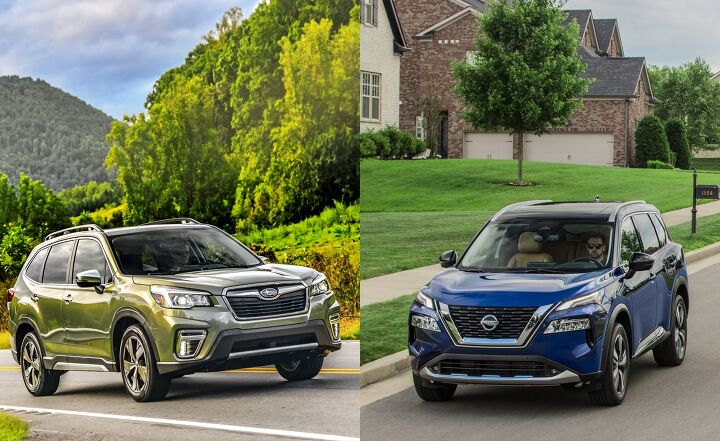






























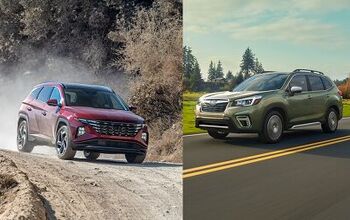
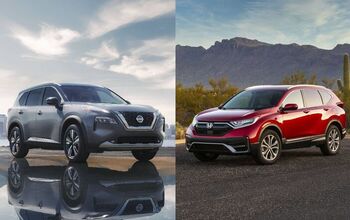

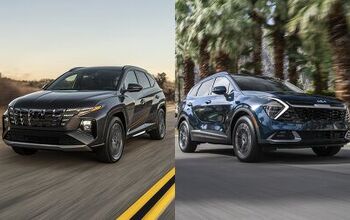

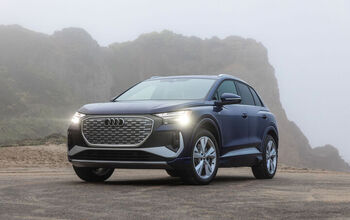


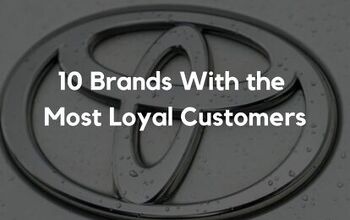
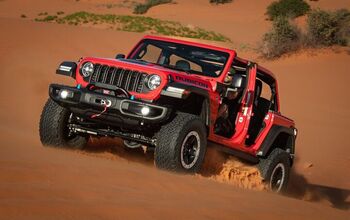

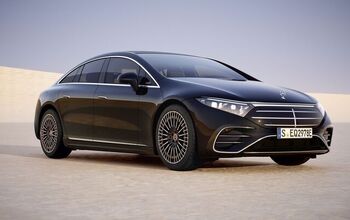



Comments
Join the conversation